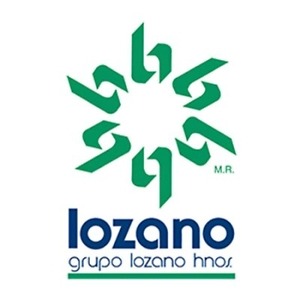
For proper management of a SAP ERP system based on segregation of duties, there are specialized tools that can help. At SYAAT, we have some GRC tools and software for SAP that allow identifying what is working well, how risky an internal or external activity is, and what accesses a person has to the platform, as well as permissions that need to be enabled to grant access to a collaborator or, conversely, revoke it to keep your information safe.
The importance of GRC for SAP lies in knowing and defining who should have the possibility of accessing the company’s sensitive information, which gives it certain value and is part of its differentiators. It is essential to bear in mind that with information concentrated in a system like SAP, with that concentration of information, someone else can access it, as long as there is access control.
To get into context, cybersecurity refers to the practices, measures, and technologies used to protect an organization’s information systems and data against cyber threats and attacks, whether internal or external. This includes protecting the information technology (IT) infrastructure, networks, computers, servers, mobile devices, and the data stored and transmitted by the company.
This aspect is crucial nowadays; previously, having information within the company was well-regarded because it was controlled, but with the communications revolution, now the information is not only on-site but also within our mobile devices. This implies connecting to a network, and it has to be secure to keep our information somewhat encrypted.
GRC (Governance, Risk, and Compliance) is applicable to SAP, and in this sense, it refers to a set of solutions and tools provided by SAP to address governance, risk, and compliance aspects within a company.
What is GRC? We could define GRC, in plain terms, as the control that the company (the board, the board of directors) wants to have over the information, to know what is happening in the operational part; no longer just relying on supervisors and middle managers, but knowing what the company’s users are doing at all times, even if they are not within the company’s premises. GRC has a risk-based approach and compliance with local and international regulations and laws, as well as those specific to the company.
Definitely, the main objective of GRC for SAP is to help organizations manage and, above all, control the risks associated with their operations, as well as ensuring compliance with applicable regulations and regulations, and establishing effective governance regarding the company’s systems and data in the SAP system.
Some of the main features of GRC for SAP include:
Risk management: to identify, assess, and mitigate risks associated with processes, transactions, and access to SAP systems. Monitoring suspicious activities, fraud detection, and implementing effective internal controls.
Internal control: for the implementation of internal controls and the automation of audit processes. Access and permission management, segregation of duties, and monitoring critical activities.
Audit management: to plan, execute, and manage internal and external audits efficiently. Report generation and tracking of corrective actions.
To start, we must first delve into the theory of fraud and talk about a very relevant component called “opportunity,” which refers to having the opportunity to commit fraud. By having a system that handles your business accounting and can generate financial information for regulatory bodies and the core of the comptroller’s office, that information will be vital, therefore, it must be intact, meaning it must be accurate and comply with certain characteristics of accounting and information security regulations.
But it must be understood that if there is an opportunity to commit fraud, there is a probability that someone will take it; that’s a rule of life. This opportunity within a system like SAP refers to the ability to carry out two functions that are not compatible. An example of this is related to master data, whether it’s about a worker or a supplier. If someone can modify or manage this master data, make a large payment to a supplier, or process an employee’s payroll, any error that occurs, such as overpaying or making a premeditated and malicious move, can generate significant fraud without the company noticing, or at least not in a timely manner. With GRC for SAP, it’s not so easy to modify or make changes to commit fraud anymore, although, undoubtedly, at SYAAT, we are always creating more and better solutions to keep the information intact and operating optimally.
Regarding this issue, many companies are audited by consulting firms or auditing companies, and often it’s mentioned that there is incorrect or improper segregation of duties within organizations. The auditor needs to verify that the company has policies and procedures in line with best practices, regulations, and compliance with laws, and a GRC system will help you deliver reports optimally and with less effort.
The international institute of internal auditors has a scheme known as “the three lines of defense,” where all members of the company collaborate in the application of risk controls or information security. The first line is the operational part, for example, the user who processes, calculates payroll, or adds suppliers. The second line of defense deals with internal control and supervision, where manuals or controls that must be managed and evaluated are reviewed. The third line is the company’s internal audit area, which will verify that the controls are actually carried out by the operation. Therefore, one of the main objectives of audits is to verify processes, review controls, and evaluate the operational part.
However, any company that wants to have control and risk measurement needs a GRC solution with segregation of duties. Although companies that are audited must meet many more requirements, even if you have a medium-sized company that is not necessarily audited by a regulatory body, it’s very useful to have a tool that performs this function.
Undoubtedly, information security is a complex issue, but it’s also essential when it comes to sensitive information. Having a GRC tool for SAP is a duty of companies that seek to be part of the change and do things properly.



